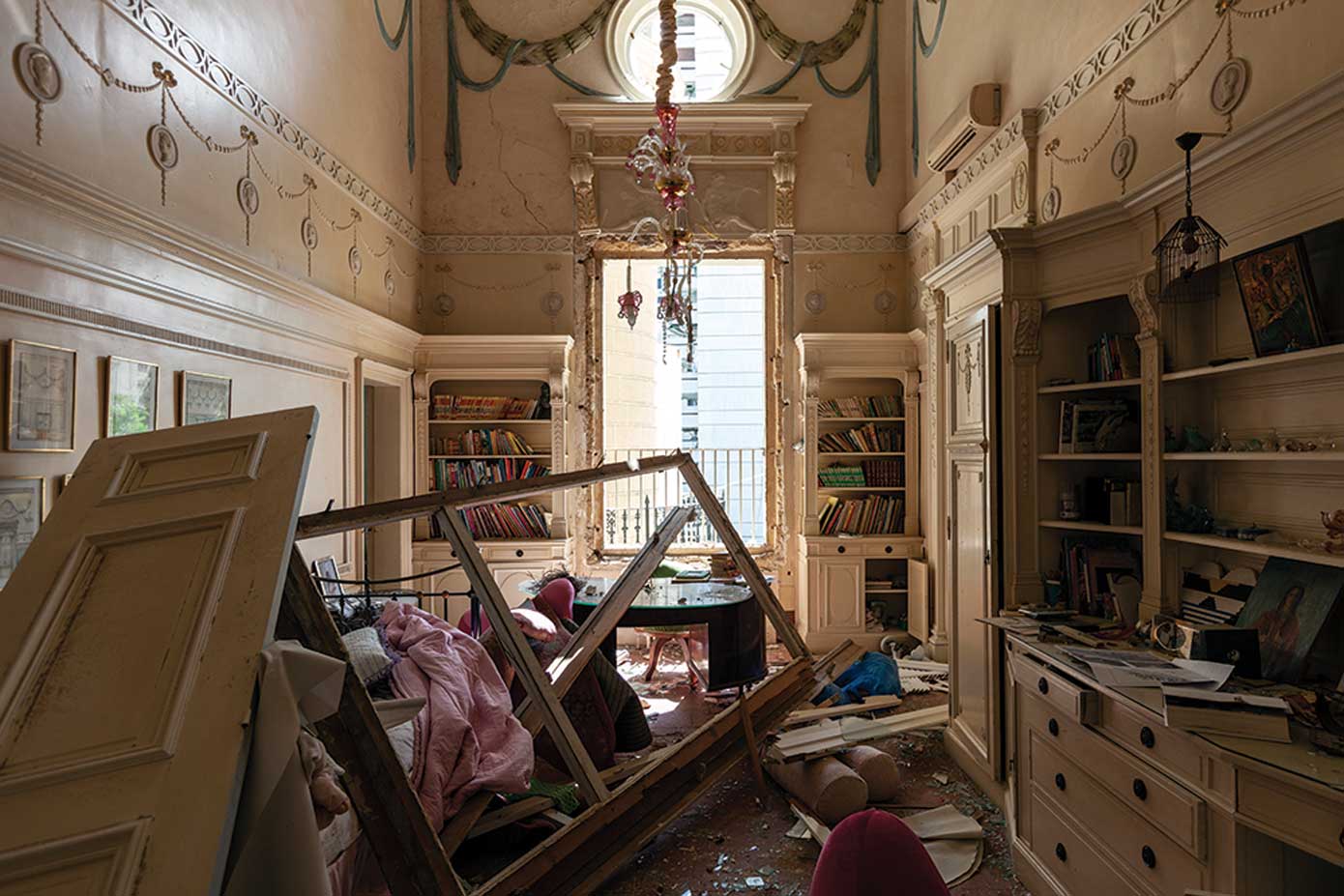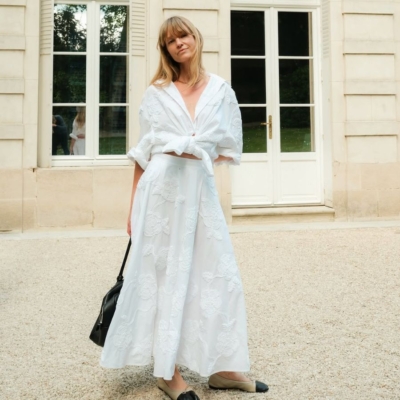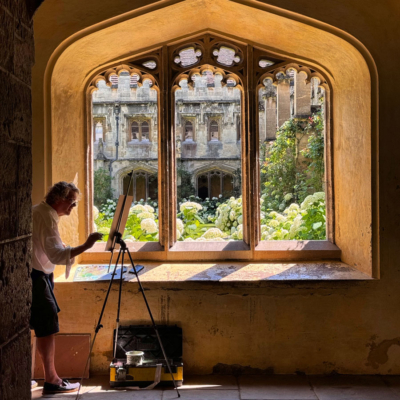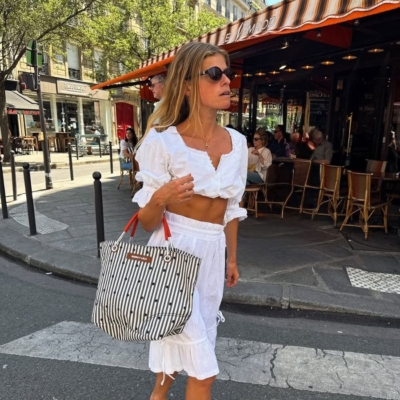For decades, Lady Yvonne Cochrane devoted herself to the preservation of Lebanon’s architectural heritage. Last year, her beloved Beirut home, Palais Sursock, was destroyed by a massive chemical blast. Injured in the blast, Lady Cochrane died a month later. Her family have vowed to rebuild the palace and continue her legacy

On August 4 2020, 2,750 tonnes of ammonium nitrate stored at the port of Lebanon’s capital city, Beirut, exploded. The resulting blast caused at least 204 deaths, 6,500 injuries and left an estimated 300,000 people homeless. Tremors from the huge explosion were felt as far away as Turkey, Syria, Israel and Palestine – even in Cyprus, more than 240 kilometres away. The explosion was one of the most powerful nonnuclear explosions in history, and Lebanon’s investigation as to its occurrence is still underway, a year after the disaster. Among the many tragic casualties was a venerated philanthropist – both in Lebanon, and here in Ireland. The Jeanne d’Arc of Lebanon’s splendid cultural heritage, as she was known, and the doyenne of Beirut society since the 1960s, Yvonne Sursock Cochrane, died aged 98, a month after the blast, from injuries sustained. At the time of the blast, she was taking tea with friends on the terrace of her home, Palais Sursock, an 160-year-old Beirut landmark in the Christian quarter of Ashrafieh. Five days after the explosion, Lady Cochrane’s grandson Alex Cochrane, London-based Irish architect, travelled to Palais Sursock and took photographs detailing the full effect of the damage. During a presentation of his photographs to an Architectural Association symposium, “Beirut After the Apocalypse”, he described the heartbreaking scene: a precious, historic cultural heritage site and his own grandmother’s beloved home ravaged and decimated.

“The explosion resulted in significant structural damage. Roofs collapsed, windows and shutters were shattered, thick masonry cracked, plaster from ornate ceilings formed mounds of debris on the floor below. Bronze metalwork lay twisted and contorted. There was glass everywhere. Antique furniture collected over generations was splintered, statues decapitated, and canvases slashed by flying glass and plaster. Objects, heirlooms, books, personal notes and letters lay strewn among the debris.” The Lebanese palace was not the only historic estate that held a place in Lady Cochrane’s heart. Lady Cochrane, who was born into an aristocratic Lebanese-Italian family, had spent nearly a decade of her life in Ireland, on the Woodbrook estate in Bray, Co Wicklow, while married to Honorary Consul-General of Ireland for Lebanon, Sir Desmond Cochrane. The couple raised their four children – Marc, Alfred, Isabelle and Roderick – at Woodbrook. Eldest son Marc, Alex’s father, inherited the estate, and Alex Cochrane grew up between Beirut and Bray. His uncle Alfred, an architect and designer, who also has a house in the grounds of Palais Sursock, still lives in a lodge on the estate.
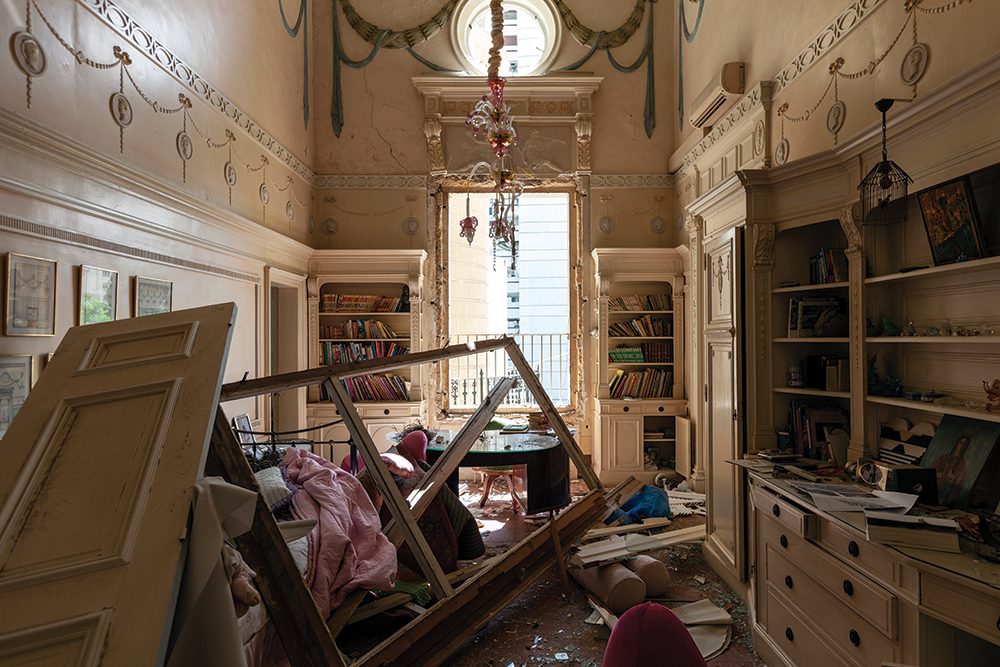
In the 1960s, when the couple had amicably separated and their children had grown up, Lady Cochrane returned to Beirut. During her life and mission as caretaker of historical buildings, she managed Beirut’s Nicolas Sursock Museum, her uncle’s villa, from 1960-1966. She co-founded with architect Assem Salam and Camille Aboussouan the Association for the Protection of Natural Sites and Ancient Homes in Lebanon and served as its president from 1960-2002.
“My mother always said that the happiest times of her life were when she was a little girl living in the palace in Beirut with her many aunts,” said Marc Cochrane. Even in the worst days of the 1975-1990 civil war in Lebanon, Lady Cochrane remained in her beloved home and after the war spent 20 years restoring the palace. “She thought if she left she might never be able to come back,” said her son Alfred. “She adored Lebanon but she was heartbroken by the way the Lebanese were destroying it.” The Ashrafieh area had endured the civil war, terrorist assassinations and Hezbollah-Israeli conflict. The hilltop neighbourhood was also under threat from developers who were destroying the old palaces to build high-rises for the country’s elite.
Lady Cochrane castigated successive governments for tearing down more cultural heritage than they replaced and labelled the reconstruction effort an “archaeological massacre”. “Beirut, once a joy of the Mediterranean, has been turned into a junkyard,” she said. But, always an optimist, she took the view that Beirut would once again become the “Garden of the Middle East”. Lady Cochrane remained at Palais Sursock until her death, on that tragic day last year. The palace will now undergo extensive reconstruction – for a second time in its history. According to Alex, the family is determined to honour his grandmother’s memory by rebuilding the ancient palace. “Her son – my uncle Roderick – his wife Mary and their daughter Ariana are spearheading a colossal effort to restore the palace to its former splendour.”
Photographs by Alex Cochrane
LOVETHEGLOSS.IE?
Sign up to our MAILING LIST now for a roundup of the latest fashion, beauty, interiors and entertaining news from THE GLOSS MAGAZINE’s daily dispatches.






